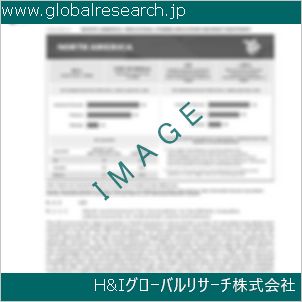Table of Contents
1 Industry Overview of Carbonblack
1.1 Definition and Specifications of Carbonblack
1.1.1 Definition of Carbonblack
1.1.2 Specifications of Carbonblack
1.2 Classification of Carbonblack
1.3 Applications of Carbonblack
1.3.1 Nuclear Application
1.3.2 Non-Nuclear Application
1.4 Industry Chain Structure of Carbonblack
1.5 Industry Overview and Major Regions Status of Carbonblack
1.5.1 Industry Overview of Carbonblack
1.5.2 Global Major Regions Status of Carbonblack
1.6 Industry Policy Analysis of Carbonblack
1.7 Industry News Analysis of Carbonblack
2 Manufacturing Cost Structure Analysis of Carbonblack
2.1 Raw Material Suppliers and Price Analysis of Carbonblack
2.2 Equipment Suppliers and Price Analysis of Carbonblack
2.3 Labor Cost Analysis of Carbonblack
2.4 Other Costs Analysis of Carbonblack
2.5 Manufacturing Cost Structure Analysis of Carbonblack
2.6 Manufacturing Process Analysis of Carbonblack
3 Technical Data and Manufacturing Plants Analysis of Carbonblack
3.1 Capacity and Commercial Production Date of Global Carbonblack Major Manufacturers in 2023
3.2 Manufacturing Plants Distribution of Global Carbonblack Major Manufacturers in 2023
3.3 R&D Status and Technology Source of Global Carbonblack Major Manufacturers in 2023
3.4 Raw Materials Sources Analysis of Global Carbonblack Major Manufacturers in 2023
4 Capacity, Production and Revenue Analysis of Carbonblack by Regions, Types and Manufacturers
4.1 Global Capacity, Production and Revenue of Carbonblack by Regions 2019-2024
4.2 Global and Major Regions Capacity, Production, Revenue and Growth Rate of Carbonblack 2019-2024
4.3 Global Capacity, Production and Revenue of Carbonblack by Types 2019-2024
4.4 Global Capacity, Production and Revenue of Carbonblack by Manufacturers 2019-2024
5 Price, Cost, Gross and Gross Margin Analysis of Carbonblack by Regions, Types and Manufacturers
5.1 Price, Cost, Gross and Gross Margin Analysis of Carbonblack by Regions 2019-2024
5.2 Price, Cost, Gross and Gross Margin Analysis of Carbonblack by Types 2019-2024
5.3 Price, Cost, Gross and Gross Margin Analysis of Carbonblack by Manufacturers 2019-2024
6 Consumption Volume, Consumption Value and Sale Price Analysis of Carbonblack by Regions, Types and Applications
6.1 Global Consumption Volume and Consumption Value of Carbonblack by Regions 2019-2024
6.2 Global and Major Regions Consumption Volume, Consumption Value and Growth Rate of Carbonblack 2019-2024
6.3 Global Consumption Volume and Consumption Value of Carbonblack by Types 2019-2024
6.4 Global Consumption Volume and Consumption Value of Carbonblack by Applications 2019-2024
6.5 Sale Price of Carbonblack by Regions 2019-2024
6.6 Sale Price of Carbonblack by Types 2019-2024
6.7 Sale Price of Carbonblack by Applications 2019-2024
6.8 Market Share Analysis of Carbonblack by Different Sale Price Levels
7 Supply, Import, Export and Consumption Analysis of Carbonblack
7.1 Supply, Consumption and Gap of Carbonblack 2019-2024
7.2 Global Capacity, Production, Price, Cost, Revenue, Supply, Import, Export and Consumption of Carbonblack 2019-2024
7.3 USA Capacity, Production, Price, Cost, Revenue, Supply, Import, Export and Consumption of Carbonblack 2019-2024
7.4 EU Capacity, Production, Price, Cost, Revenue, Supply, Import, Export and Consumption of Carbonblack 2019-2024
7.5 China Capacity, Production, Price, Cost, Revenue, Supply, Import, Export and Consumption of Carbonblack 2019-2024
7.6 Japan Capacity, Production, Price, Cost, Revenue, Supply, Import, Export and Consumption of Carbonblack 2019-2024
8 Major Manufacturers Analysis of Carbonblack
8.1 Manufacturer One
8.1.1 Company Profile
8.1.2 Product Picture and Specifications
8.1.2.1 Type I
8.1.2.2 Type II
8.1.2.3 Type III
8.1.3 Capacity, Production, Price, Cost, Gross and Revenue
8.1.4 Contact Information
8.2 Manufacturer Two
8.2.1 Company Profile
8.2.2 Product Picture and Specifications
8.2.2.1 Type I
8.2.2.2 Type II
8.2.2.3 Type III
8.2.3 Capacity, Production, Price, Cost, Gross and Revenue
8.2.4 Contact Information
8.3 Manufacturer Three
8.3.1 Company Profile
8.3.2 Product Picture and Specifications
8.3.2.1 Type I
8.3.2.2 Type II
8.3.2.3 Type III
8.3.3 Capacity, Production, Price, Cost, Gross and Revenue
8.3.4 Contact Information
8.4 Manufacturer Four
8.4.1 Company Profile
8.4.2 Product Picture and Specifications
8.4.2.1 Type I
8.4.2.2 Type II
8.4.2.3 Type III
8.4.3 Capacity, Production, Price, Cost, Gross and Revenue
8.4.4 Contact Information
8.5 Manufacturer Five
8.5.1 Company Profile
8.5.2 Product Picture and Specifications
8.5.2.1 Type I
8.5.2.2 Type II
8.5.2.3 Type III
8.5.3 Capacity, Production, Price, Cost, Gross and Revenue
8.5.4 Contact Information
…
9 Marketing Trader or Distributor Analysis of Carbonblack
9.1 Marketing Channels Status of Carbonblack
9.2 Traders or Distributors with Contact Information of Carbonblack by Regions
9.3 Ex-work Price, Channel Price and End Buyer Price Analysis of Carbonblack
9.4 Regional Import, Export and Trade Analysis of Carbonblack
10 Industry Chain Analysis of Carbonblack
10.1 Upstream Major Raw Materials Suppliers Analysis of Carbonblack
10.1.1 Major Raw Materials Suppliers with Contact Information Analysis of Carbonblack
10.1.2 Major Raw Materials Suppliers with Supply Volume Analysis of Carbonblack by Regions
10.2 Upstream Major Equipment Suppliers Analysis of Carbonblack
10.2.1 Major Equipment Suppliers with Contact Information Analysis of Carbonblack
10.2.2 Major Equipment Suppliers with Product Pictures Analysis of Carbonblack by Regions
10.3 Downstream Major Consumers Analysis of Carbonblack
10.3.1 Major Consumers with Contact Information Analysis of Carbonblack
10.3.2 Major Consumers with Consumption Volume Analysis of Carbonblack by Regions
10.4 Supply Chain Relationship Analysis of Carbonblack
11 Development Trend of Analysis of Carbonblack
11.1 Capacity, Production and Revenue Forecast of Carbonblack by Regions and Types
11.1.1 Global Capacity, Production and Revenue of Carbonblack by Regions 2024-2029
11.1.2 Global and Major Regions Capacity, Production, Revenue and Growth Rate of Carbonblack 2024-2029
11.1.3 Global Capacity, Production and Revenue of Carbonblack by Types 2024-2029
11.2 Consumption Volume and Consumption Value Forecast of Carbonblack by Regions, Types and Applications
11.2.1 Global Consumption Volume and Consumption Value of Carbonblack by Regions 2024-2029
11.2.2 Global and Major Regions Consumption Volume, Consumption Value and Growth Rate of Carbonblack 2024-2029
11.2.3 Global Consumption Volume and Consumption Value of Carbonblack by Types 2024-2029
11.2.4 Global Consumption Volume and Consumption Value of Carbonblack by Applications 2024-2029
11.3 Supply, Import, Export and Consumption Forecast of Carbonblack
11.3.1 Supply, Consumption and Gap of Carbonblack 2024-2029
11.3.2 Global Capacity, Production, Price, Cost, Revenue, Supply, Import, Export and Consumption of Carbonblack 2024-2029
11.3.3 USA Capacity, Production, Price, Cost, Revenue, Supply, Import, Export and Consumption of Carbonblack 2024-2029
11.3.4 EU Capacity, Production, Price, Cost, Revenue, Supply, Import, Export and Consumption of Carbonblack 2024-2029
11.3.5 China Capacity, Production, Price, Cost, Revenue, Supply, Import, Export and Consumption of Carbonblack 2024-2029
11.3.6 Japan Capacity, Production, Price, Cost, Revenue, Supply, Import, Export and Consumption of Carbonblack 2024-2029
12 New Project Investment Feasibility Analysis of Carbonblack
12.1 New Project SWOT Analysis of Carbonblack
12.2 New Project Investment Feasibility Analysis of Carbonblack
13 Conclusion of the Global Carbonblack (CAS 1333-86-4) Industry 2024 Market Research Report
| ※参考情報 カーボンブラック(Carbon black)は、炭素を主成分とする微細な粒子状の素材であり、従来の黒色素や着色剤として非常に広範囲に使用されています。CAS番号1333-86-4で示されるこの物質は、通常、原料として石油や天然ガスを利用して合成され、その生成は化学的な過程によって行われます。 カーボンブラックの最大の特徴は、その微細な粒子のサイズと形状にあります。粒子の直径は通常10ナノメートルから500ナノメートル程度であり、これによりカーボンブラックは高い比表面積を持っています。この性質は、材料科学や化学分野において非常に重要で、他の物質と混合した際の特性にも影響を及ぼします。 カーボンブラックにはいくつかの種類があり、主に製造方法や特性によって分類されます。一般的な分類としては、アセチレンブラック、炉黒、熱黒、大気中燃焼黒などがあります。アセチレンブラックは高純度の炭素で構成され、特に高い導電性や耐熱性を持ちます。一方で、炉黒は一般的な用途に広く使用され、コスト効率が良いとされています。熱黒や大気中燃焼黒は、特定の環境条件下で生成され、特異な特性を持っています。 カーボンブラックの用途は多岐にわたりますが、最も一般的な用途は自動車タイヤやゴム製品、プラスチックの着色剤としての使用です。タイヤに添加することで、耐摩耗性や紫外線耐性を向上させることができます。また、ゴムコンパウンドにおいては、強度や弾性を向上させる効果があります。さらに、カーボンブラックは電気的特性を持つため、導電性プラスチックや電子機器の部品にも用いられます。 また、カーボンブラックは環境技術においても注目されています。例えば、二酸化炭素の吸着剤としての性質を生かして、環境浄化や資源再利用の分野での利用が模索されています。カーボンブラックの特性を生かした新しい材料の開発や応用についても、多くの研究が行われています。 最近の技術革新により、カーボンブラックの製造プロセスや使用方法は進化しており、より環境に配慮した製造体系が構築されています。再生可能資源からのカーボンブラックの生成や、廃棄物からのフィードストックの利用などが進められています。これにより、サステイナブルな材料としての需要が高まっています。 さらに、ナノテクノロジーの発展により、カーボンブラックを用いた新しい機能性材料が登場し、例えば医療やエレクトロニクス分野においても利用が期待されています。バイオ医療分野では、ドラッグデリバリーシステムや診断技術における応用が進められているほか、エレクトロニクスにおいては、導電性フィルムやセンサー技術にも用いられています。 カーボンブラックはその特性を活かして数多くの産業で重要な役割を果たしており、今後もその用途拡大や新たな機能開発が期待されています。環境に優しい製造プロセスの導入や新しい応用技術の開発により、持続可能な社会の実現に向けて貢献することが求められています。 |
❖ 免責事項 ❖
http://www.globalresearch.jp/disclaimer












